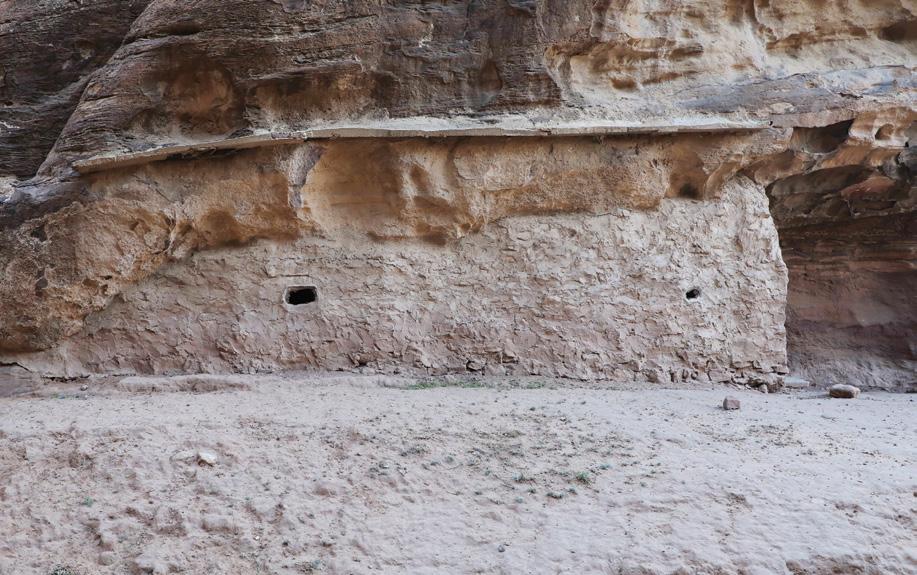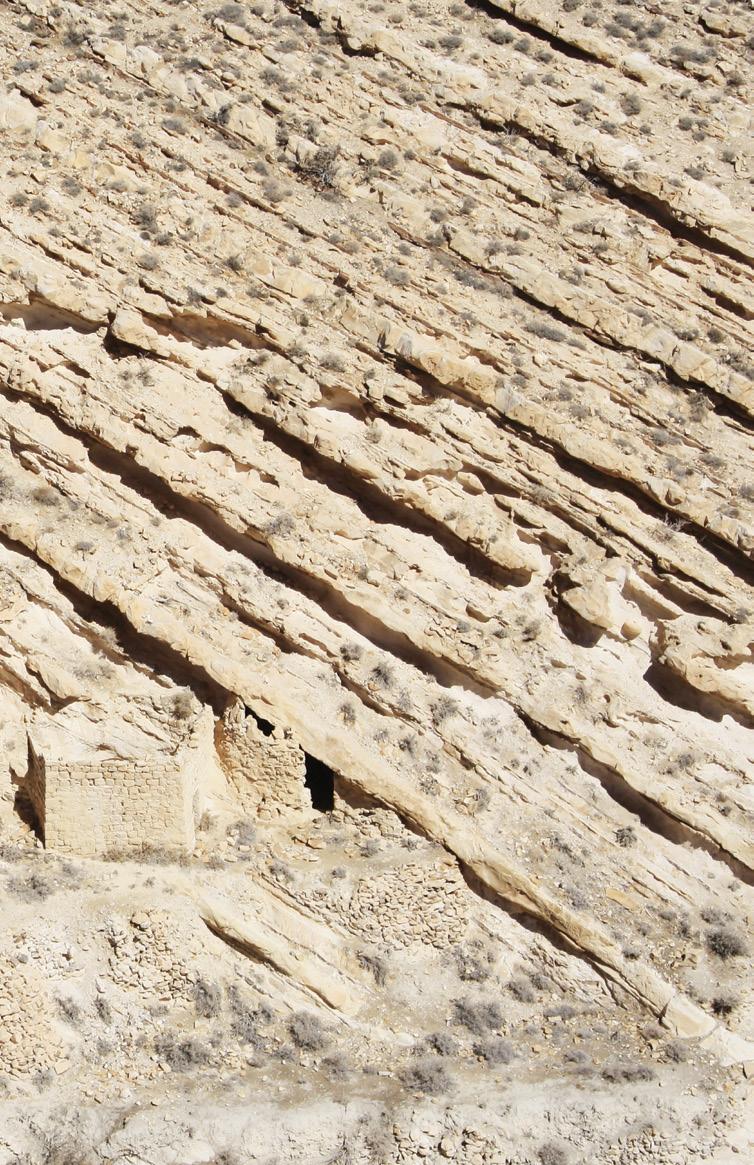
6 minute read
Knock, I am home
Ellipse, 2017. Brass, textile, electrical materials. Courtesy TextielMuseum/ TextielLab, Tilburg. Photography by MasiarPasquali.
For example, an installation that regards the growth of a tree and the CO2 retention in the timber produced from it can be used by companies to ensure a more conscious management of the material. Other installations inform how the treatment of certain wood species can be used for objects that commonly contribute to the illegal use of the material, offering alternative solutions. Another subtle suggestion looks at how rendering tools that sometimes offer plug-ins where illegal or endangered species can be rendered, could perhaps use programming to offer more useful information – such as calculating the impact of certain materials to make more responsible decisions.
On a different note, the exhibition also examines the relationships between humans in connection with other non-human living species.
“For a very long time we have put humans at the centre of the universe and design [has been] committed totally to this idea: designing for humans at the service of humans. I still think that’s great because often design isn’t even thinking about that,” says Farresin. “Nevertheless, if we think of ecology as a cohabitation of multiple species in an environment, then whenever we design something we need to know that it will have an impact on other species too. And in the case of wood, we are actually working with other species.
“People think we’re playing here with the idea that we shouldn’t use trees because they are living – but that isn’t what we are saying. What we are saying is that actually we construct things with trees, so when we produce things it’s not us shaping wood and the trees being non-participating [tools] in this process. Trees participate in different ways. We simply think that there is large scope for intervention, which already exists, where designers can think and operate and design not only for humans but also for living non-humans.”
With Formafantasma’s recent appointment as heads of Geo Design, a new Master’s course at the Design Academy of Eindhoven, the duo is looking to pass down the knowledge obtained from their research to a younger generation.
“Education for us is another outlet as part of our work, where it is not only about us but also about others. I think in the professional life of every person you have ideas that are larger than your own work, and education allows you to explore those issues and those ideas,” says Farresin. He adds that today the concerns of young design students go beyond that of the production of objects, aligning more fundamentally across political, ecological and gender-related concerns. Farresin stresses that this does not mean design schools should stop making products; however, the reality is that design students today require a greater reasoning behind designing products, and it is something that is “extremely interesting to witness”, he admits.
“It is a very interesting moment for design because I would say that – even for designers who are already in the discipline – we are almost not ready for this level of complexity and engagement. So, there will be a lot of mistakes and a lot of naïveté for some years, but it doesn’t really matter because the discipline will develop according to these needs, which are larger than developing products. It is an inevitable step.” id


‘Confrontations’ exhibition at the Vitra Design Museum Gallery where Formafantasma were paired with Doris Wicki, one of the last charcoal burners in Europe.
Photography by Luisa Zanzani.
Photographer and multidisciplinary designer, Ibn Talib, explores dwellings carved into Jordan’s desert landscape in this photo essay
PHOTOGRAPHY AND WORDS BY IBN TALIB


As I walked down Wadi Muaysra - one of the rarely used alternative routes to Petra, Jordan - I could not help but notice the remains of tombs and dwellings of ancient peoples hollowed out of the rock face of the rift. There they remain abandoned, decayed and slowly disappearing. On occasion, an industrious bedouin would temporarily transform one into an abode or a stable for his goats.
These dwellings are formed - and are part of - the immediate landscape. It is the land that they occupy – shaped and moulded by the elements. Our role as inhabitants remains insignificant in their creation. And once we are gone, there they will remain, dissolving and transforming, again and again. This inherent ephemerality is what intrigues me the most.
The value of documenting such dwellings is important, because the relationship of these dwellings with the land is intrinsic. They provide examples of holistic and responsive reactions to their immediate surroundings, a quality that is rarely found in the architecture of today: an architecture of patterns and imposed ideologies constructed by extraneous, unsustainably sourced materials.
The photographs are a result of my extensive research throughout Jordan. The relatively geographically small country has three distinct topographic profiles: the Jordan Valley, the Highlands and the Eastern Steppe (Badia). These areas are covered by four climatic zones: dry and hot subtropical, sub-humid-semiarid, semiarid-arid and arid regions.
As a consequence, as early as the Paleolithic period until as late as the mid-twentieth century in Jordan, each of these regions has produced distinctive domestic architecture. The dwellers who inhabited these regions have ingeniously utilised the opportunities afforded to them by the landscape, using the materials that were immediately available and constructing structures that employed a variety of building techniques.
They created spaces by digging and excavating into solid forms, such as with the infamous Nabatean Petra; or built upon it in the form of stone or mud walls, supporting a sheltering roof. In some cases, these interventions were complemented by the addition of temporaneous structures constructed from wood pillars, supporting tensile materials sourced from nature. This ingenuity sadly completely disappeared after the advent and the availability of the concrete/cement block, starting from the 1960s.
This series also relates to a common theme found across my work. During Amman Design Week in 2019, for example, as part the Atlal Collective, we presented a taxonomy of the soils from Jordan in the form of an installation of nine rammed earth columns, set on a pedestal that also doubled as a sieve. Each of the columns displayed a distinct materiality, plasticity and gravity. Patrons were invited to touch these forms – and as they did, the forms crumbled and eroded onto the floor below: fragility in full display. It is the very same fragility witnessed in the dwellings covered by the series at hand.
Top and bottom: Al-Bayda, Jordan, 2019. Next page: Shobak, Jordan, 2017.




‘Knock, I am Home’ is an ongoing and extensive research project which will be fully documented in an upcoming book. Ibn Talib is currently looking to raise funds for its production along with an accompanying exhibition.










